Foreword / YouTube Video Review
The review on this website is a brief overview and summary of the objective performance of this speaker. It is not intended to be a deep dive. Moreso, this is information for those who prefer “just the facts” and prefer to have the data without the filler.
However, for those who want more - a detailed explanation of the objective performance, and my subjective evaluation (what I heard, what I liked, etc.) - please watch the below video where I go more in-depth.
Information and Photos
The JBL 305P MkII is a powered 2-way Studio Monitor featuring a 5-inch midwoofer and 1-inch dome tweeter. It features Balanced XLR & 1/4" TRS Inputs with input sensitivity options of +4dBu/-10dBv, a boundary EQ (Low-Frequency shelf) as well as a High-Frequency shelf to tailor the sound. The following is from the manufacturer’s website:
The next-generation JBL 305P MkII powered studio monitor makes legendary JBL performance available to every studio. With the revolutionary JBL Image Control Waveguide and refined transducers, JBL 305P MkII offers stunning detail, precise imaging, a wide sweet spot and impressive dynamic range that enhances the critical listening capabilities of any modern workspace. Featuring patented technologies derived from the JBL 7 Series and M2 Master Reference Monitors and, sporting a sleek, modern design, JBL 305P MkII delivers outstanding performance and an enjoyable mix experience at an accessible price.
MSRP is about $300 USD for a pair.
And here are some specs copied from the manual:
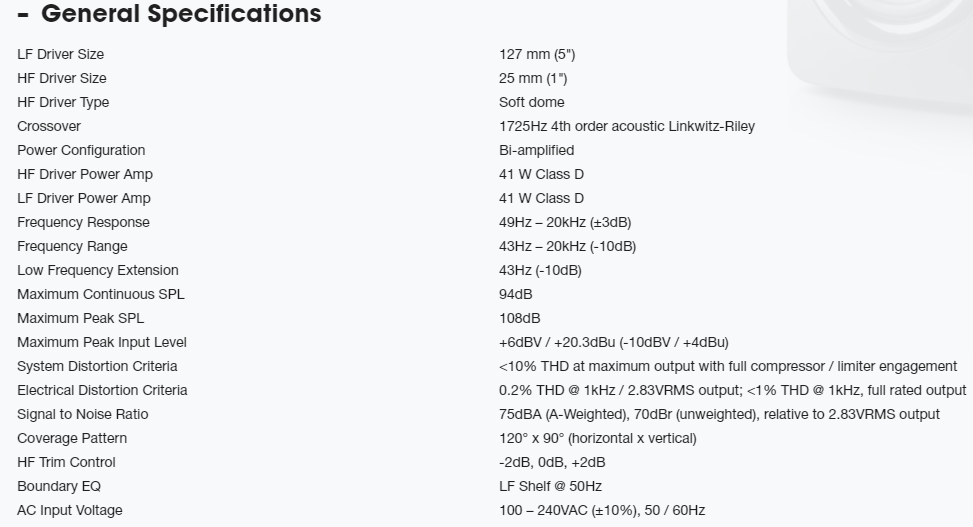
CTA-2034 (SPINORAMA) and Accompanying Data
All data collected using Klippel’s Near-Field Scanner. The Near-Field-Scanner 3D (NFS) offers a fully automated acoustic measurement of direct sound radiated from the source under test. The radiated sound is determined in any desired distance and angle in the 3D space outside the scanning surface. Directivity, sound power, SPL response and many more key figures are obtained for any kind of loudspeaker and audio system in near field applications (e.g. studio monitors, mobile devices) as well as far field applications (e.g. professional audio systems). Utilizing a minimum of measurement points, a comprehensive data set is generated containing the loudspeaker’s high resolution, free field sound radiation in the near and far field. For a detailed explanation of how the NFS works and the science behind it, please watch the below discussion with designer Christian Bellmann:
A picture of the setup in my garage:
The reference plane in this test is at tweeter. XLR, +10dBv, port open (not stuffed).
Measurements are provided in a format in accordance with the Standard Method of Measurement for In-Home Loudspeakers (ANSI/CTA-2034-A R-2020). For more information, please see this link.
CTA-2034 / SPINORAMA:
The On-axis Frequency Response (0°) is the universal starting point and in many situations, it is a fair representation of the first sound to arrive at a listener’s ears.
The Listening Window is a spatial average of the nine amplitude responses in the ±10º vertical and ±30º horizontal angular range. This encompasses those listeners who sit within a typical home theater audience, as well as those who disregard the normal rules when listening alone.
The Early Reflections curve is an estimate of all single-bounce, first-reflections, in a typical listening room.
Sound Power represents all the sounds arriving at the listening position after any number of reflections from any direction. It is the weighted rms average of all 70 measurements, with individual measurements weighted according to the portion of the spherical surface that they represent.
Sound Power Directivity Index (SPDI): In this standard the SPDI is defined as the difference between the listening window curve and the sound power curve.
Early Reflections Directivity Index (EPDI): is defined as the difference between the listening window curve and the early reflections curve. In small rooms, early reflections figure prominently in what is measured and heard in the room so this curve may provide insights into potential sound quality.
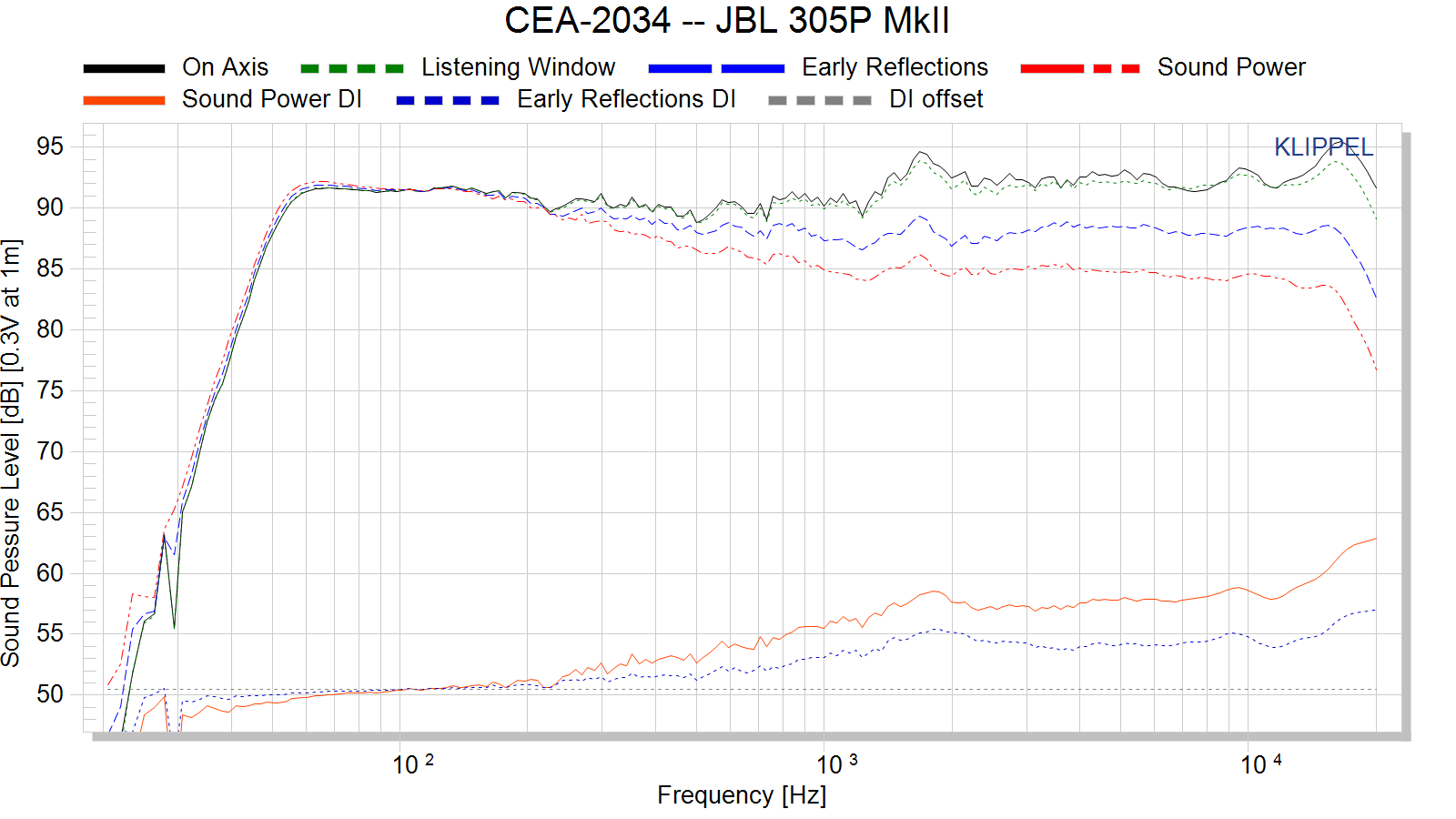
Early Reflections Breakout:
Floor bounce: average of 20º, 30º, 40º down
Ceiling bounce: average of 40º, 50º, 60º up
Front wall bounce: average of 0º, ± 10º, ± 20º, ± 30º horizontal
Side wall bounces: average of ± 40º, ± 50º, ± 60º, ± 70º, ± 80º horizontal
Rear wall bounces: average of 180º, ± 90º horizontal

Estimated In-Room Response:
In theory, with complete 360-degree anechoic data on a loudspeaker and sufficient acoustical and geometrical data on the listening room and its layout it would be possible to estimate with good precision what would be measured by an omnidirectional microphone located in the listening area of that room. By making some simplifying assumptions about the listening space, the data set described above permits a usefully accurate preview of how a given loudspeaker might perform in a typical domestic listening room. Obviously, there are no guarantees because individual rooms can be acoustically aberrant. Sometimes rooms are excessively reflective (“live”) as happens in certain hot, humid climates, with certain styles of interior décor and in under-furnished rooms. Sometimes rooms are excessively “dead” as in other styles of décor and in some custom home theaters where acoustical treatment has been used excessively. This form of post processing is offered only as an estimate of what might happen in a domestic living space with carpet on the floor and a “normal” amount of seating, drapes, and cabinetry.
For these limited circumstances it has been found that a usefully accurate Predicted In-Room (PIR) amplitude response, also known as a “room curve” is obtained by a weighted average consisting of 12 % listening window, 44 % early reflections and 44 % sound power. At very high frequencies errors can creep in because of excessive absorption, microphone directivity, and room geometry. These discrepancies are not considered to be of great importance.

Horizontal Frequency Response (0° to ±90°):

Vertical Frequency Response (0° to ±40°):

Horizontal Contour Plot (not normalized):
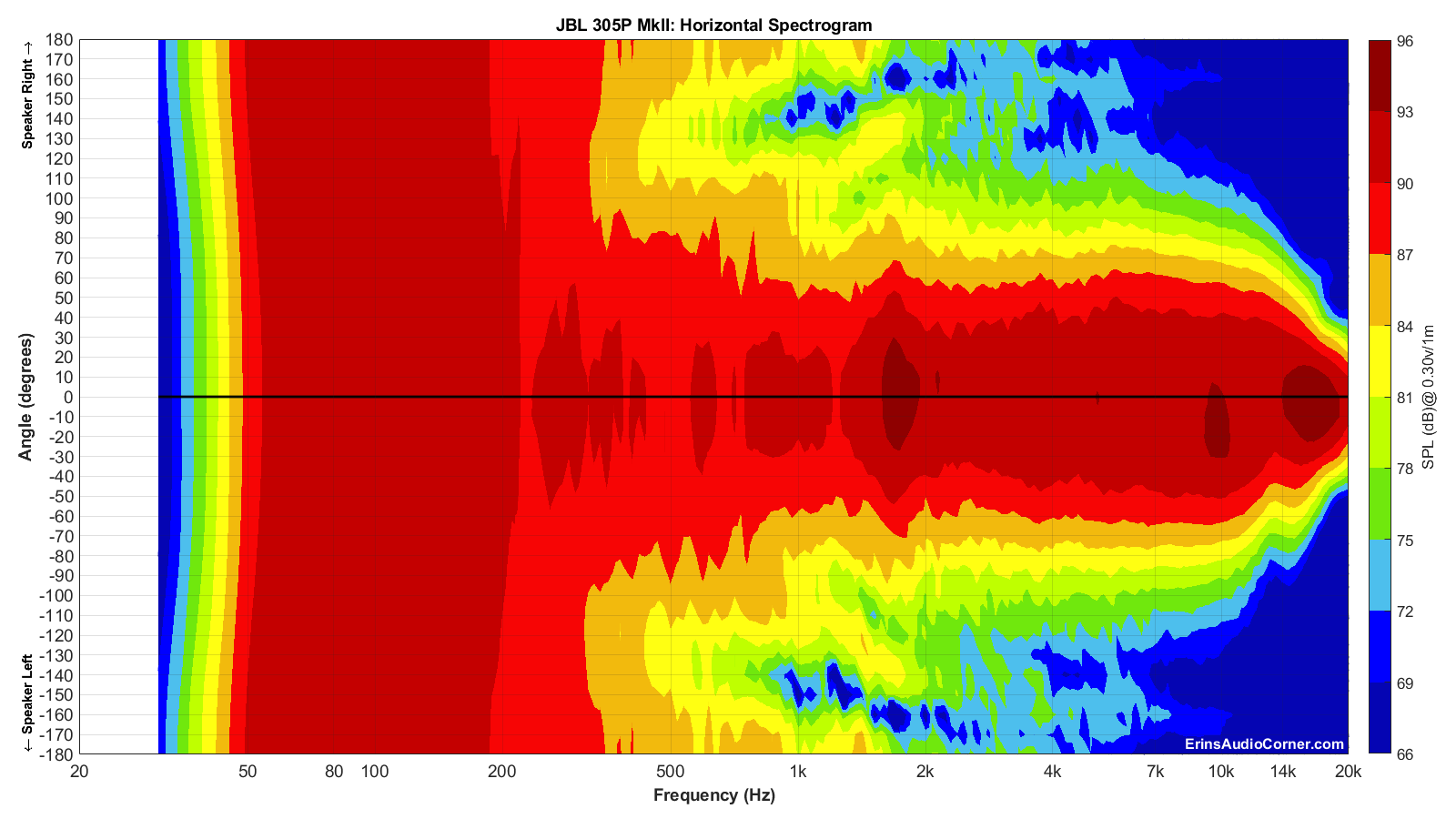
Horizontal Contour Plot (normalized):

Vertical Contour Plot (not normalized):
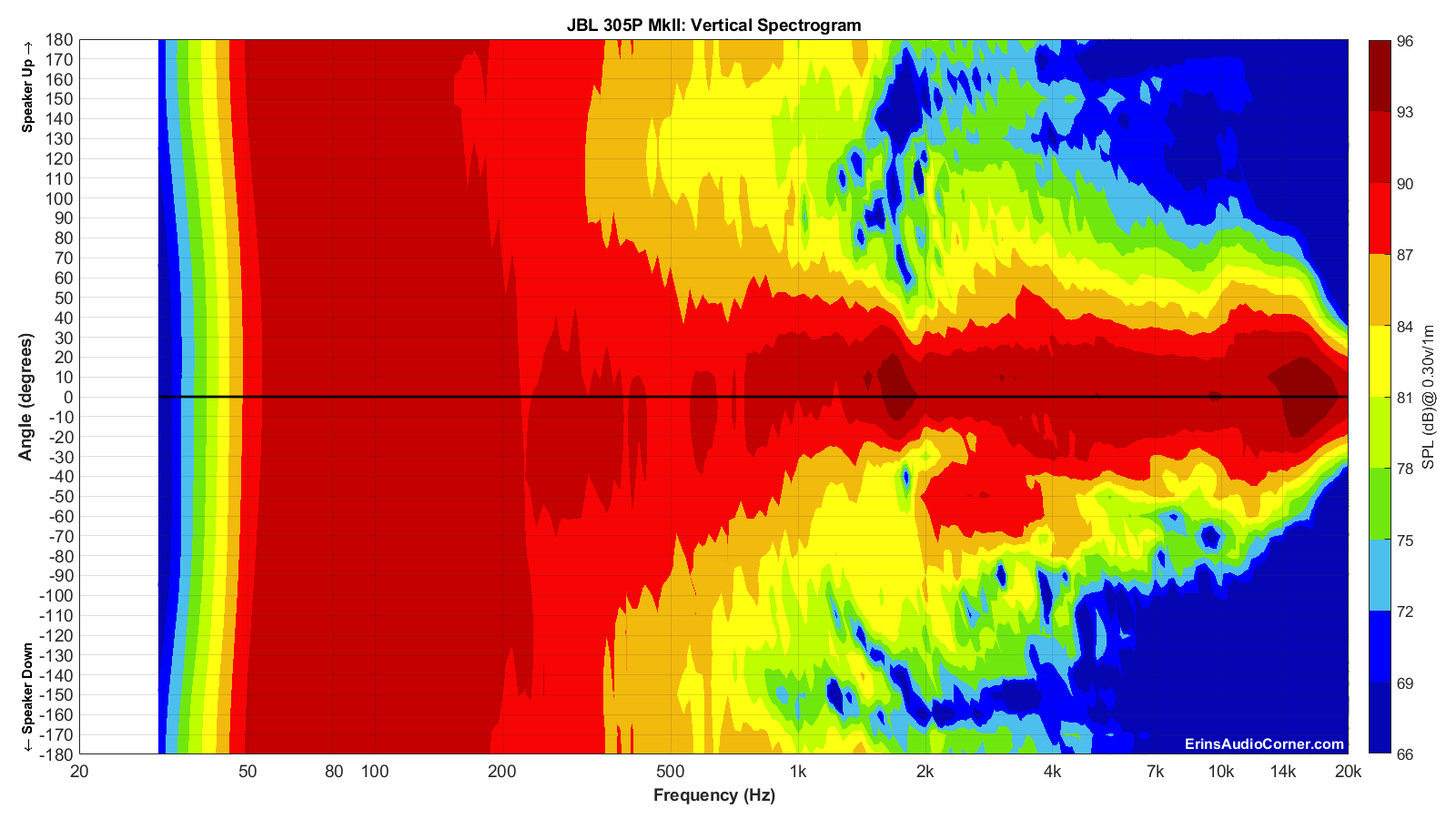
Vertical Contour Plot (normalized):
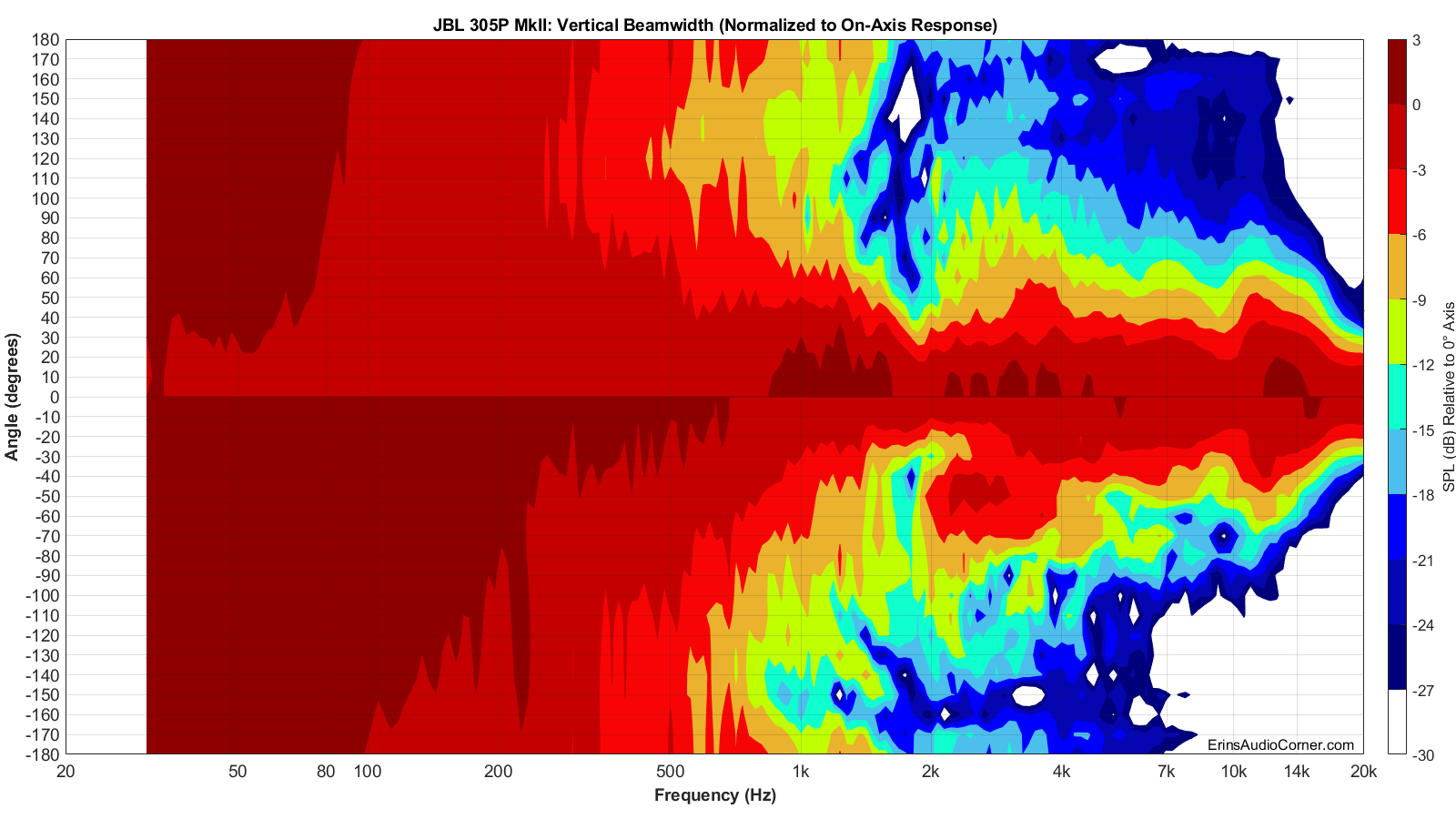
Additional Measurements
On-Axis Response Linearity
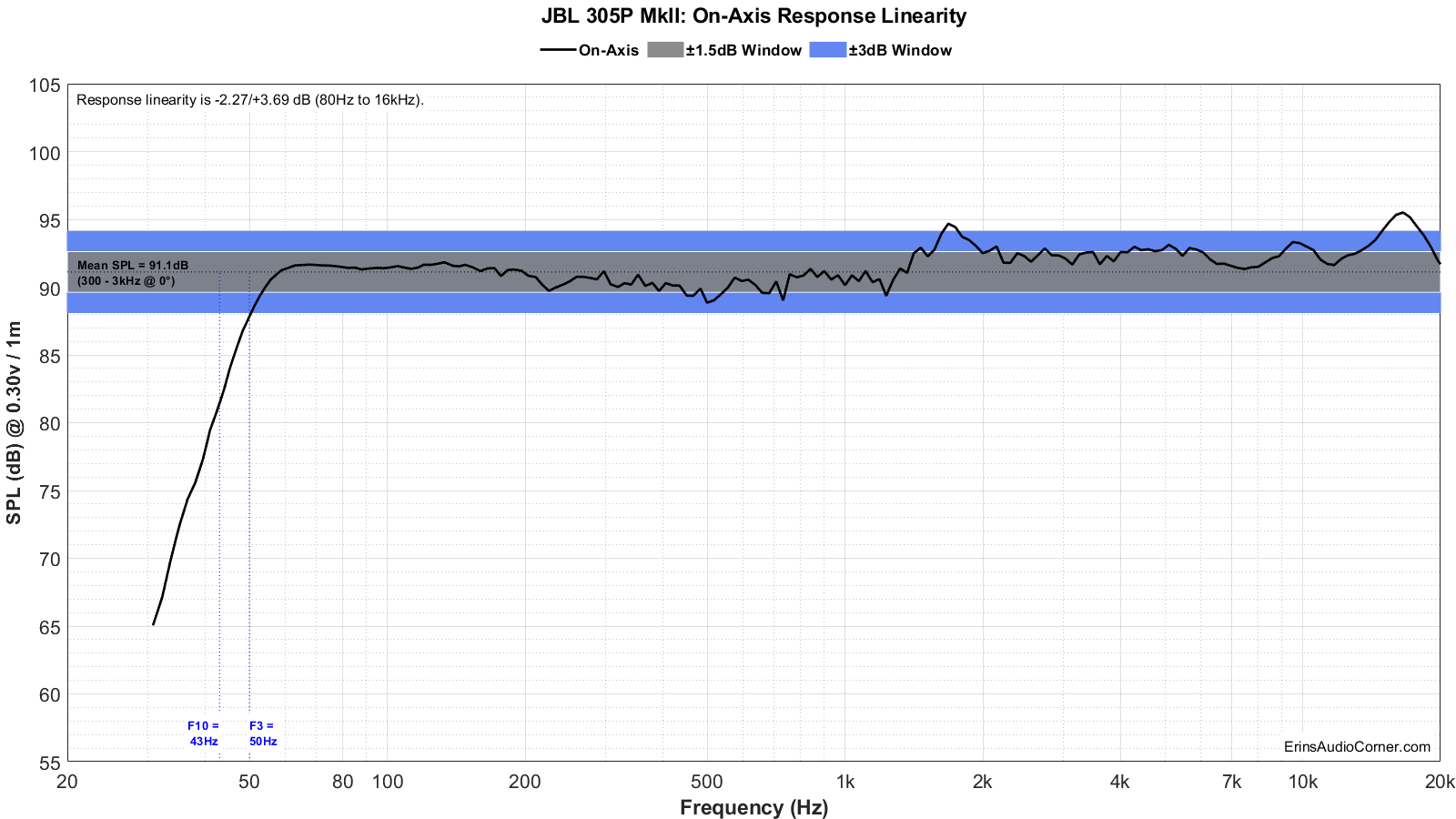
“Globe” Plots
These plots are generated from exporting the Klippel data to text files. I then process that data with my own MATLAB script to provide what you see. These are not part of any software packages and are unique to my tests.
Horizontal Polar (Globe) Plot:
This represents the sound field at 2 meters - above 200Hz - per the legend in the upper left.
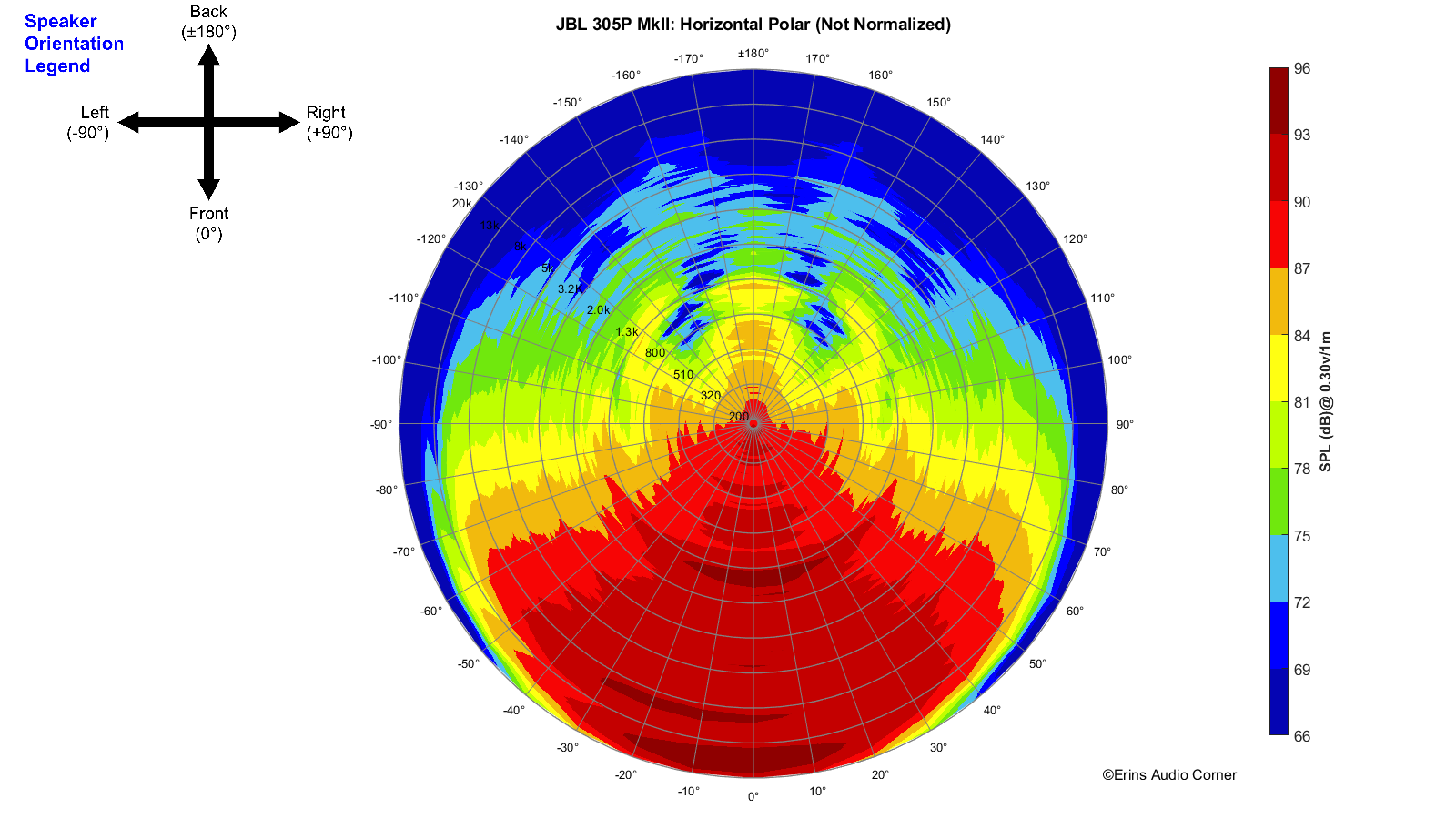
Vertical Polar (Globe) Plot:
This represents the sound field at 2 meters - above 200Hz - per the legend in the upper left.
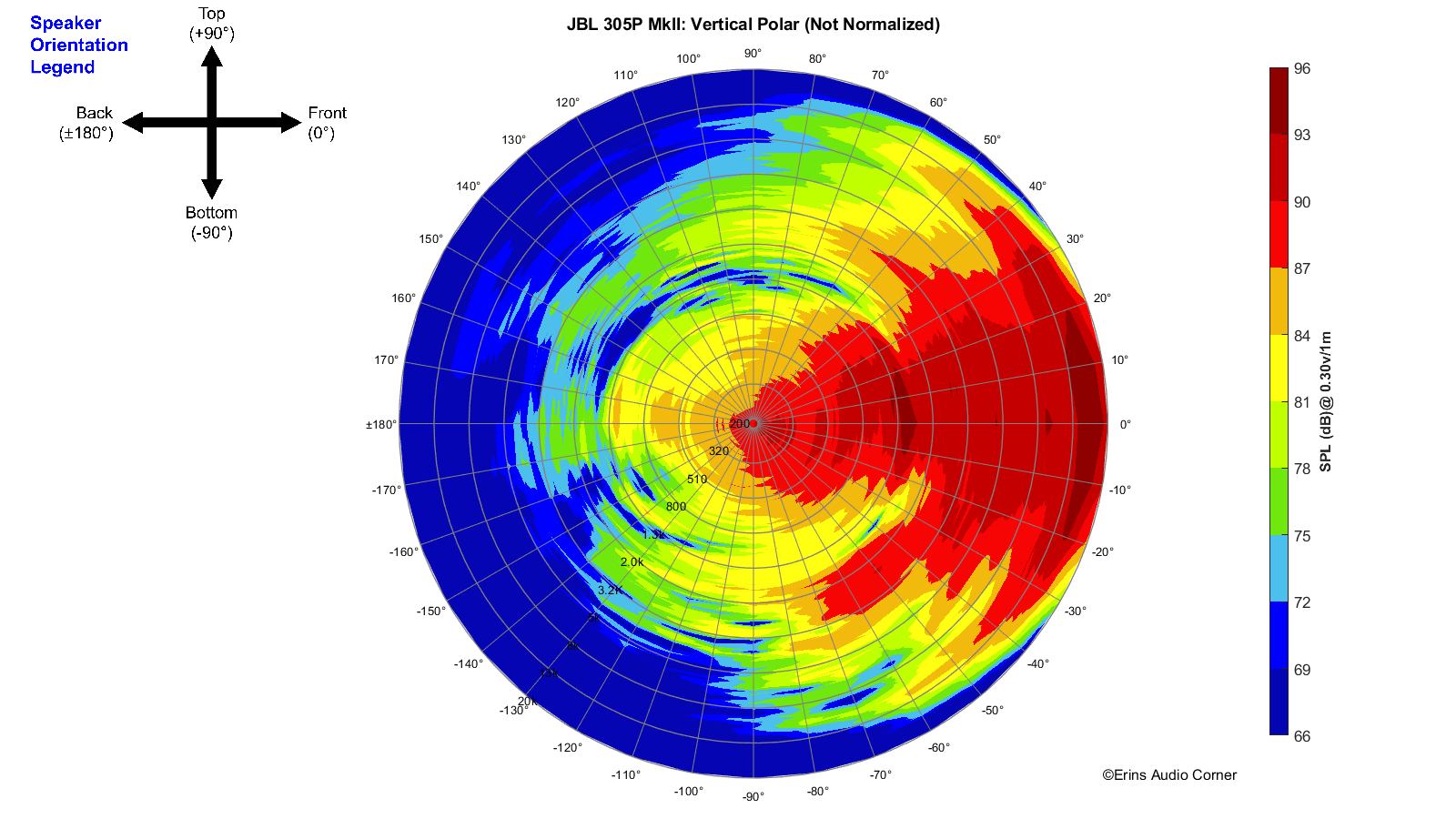
Harmonic Distortion
Harmonic Distortion at 86dB @ 1m:
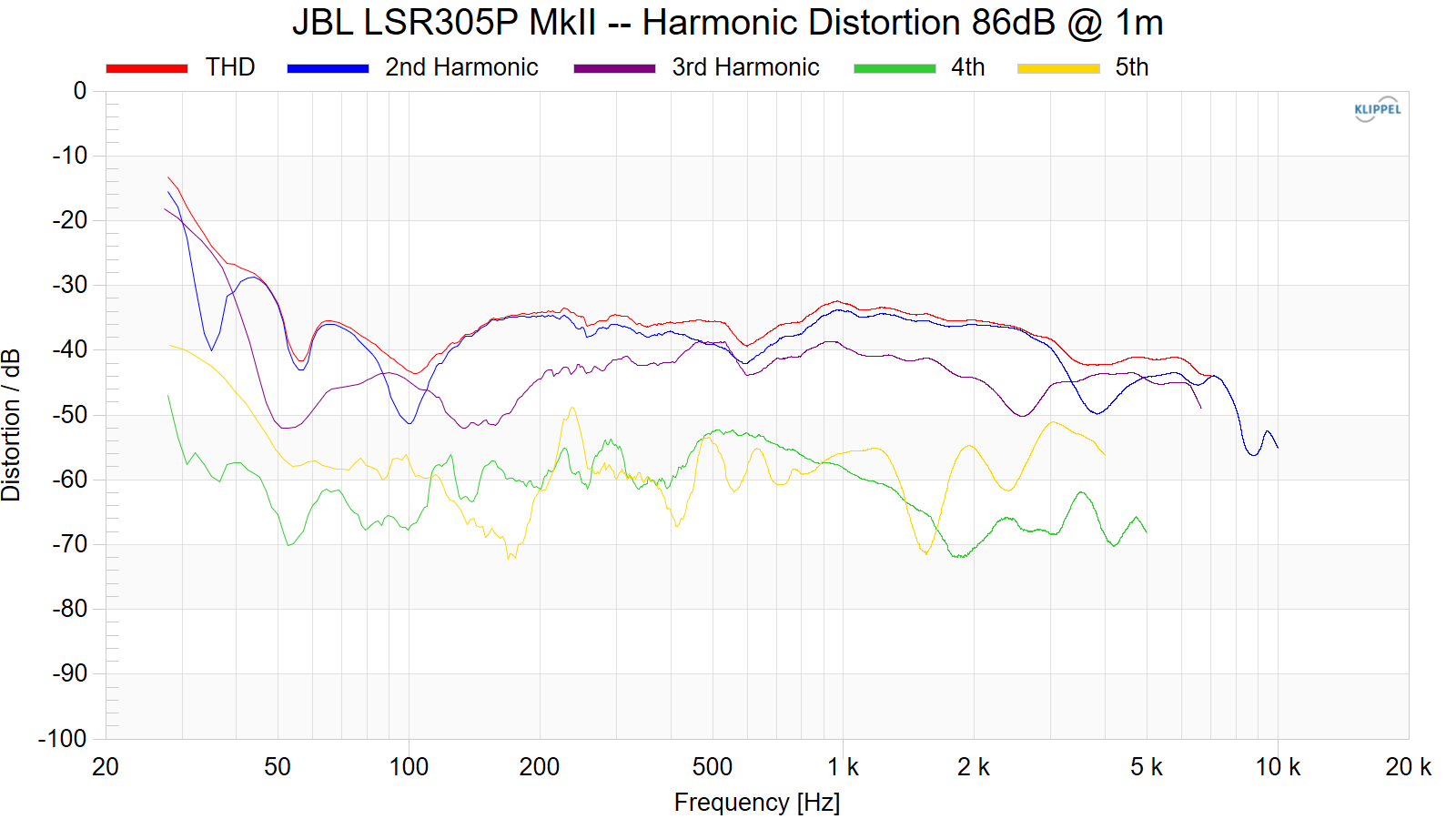
Harmonic Distortion at 96dB @ 1m:
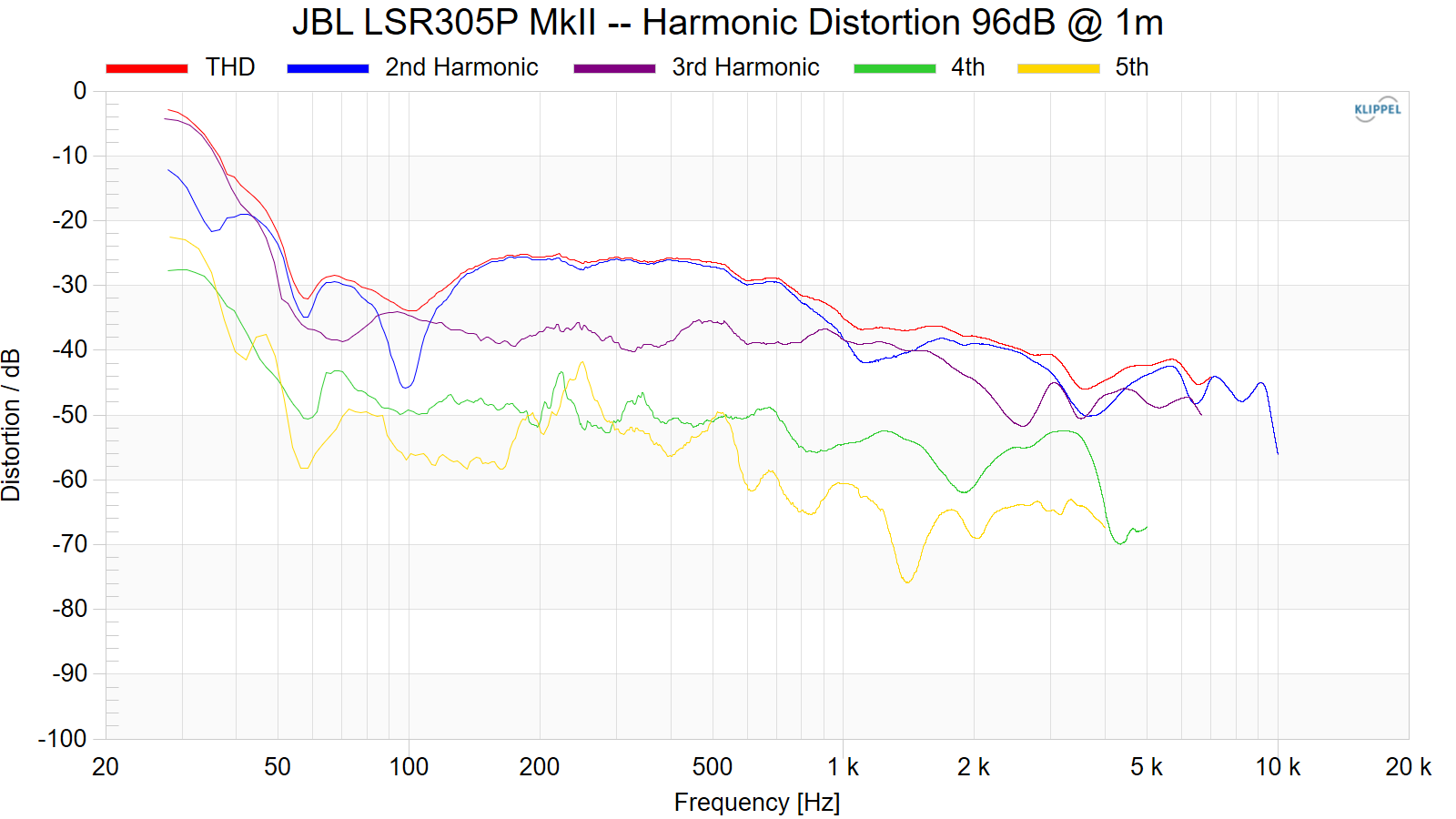
Near-Field Response
Nearfield response of individual drive units:
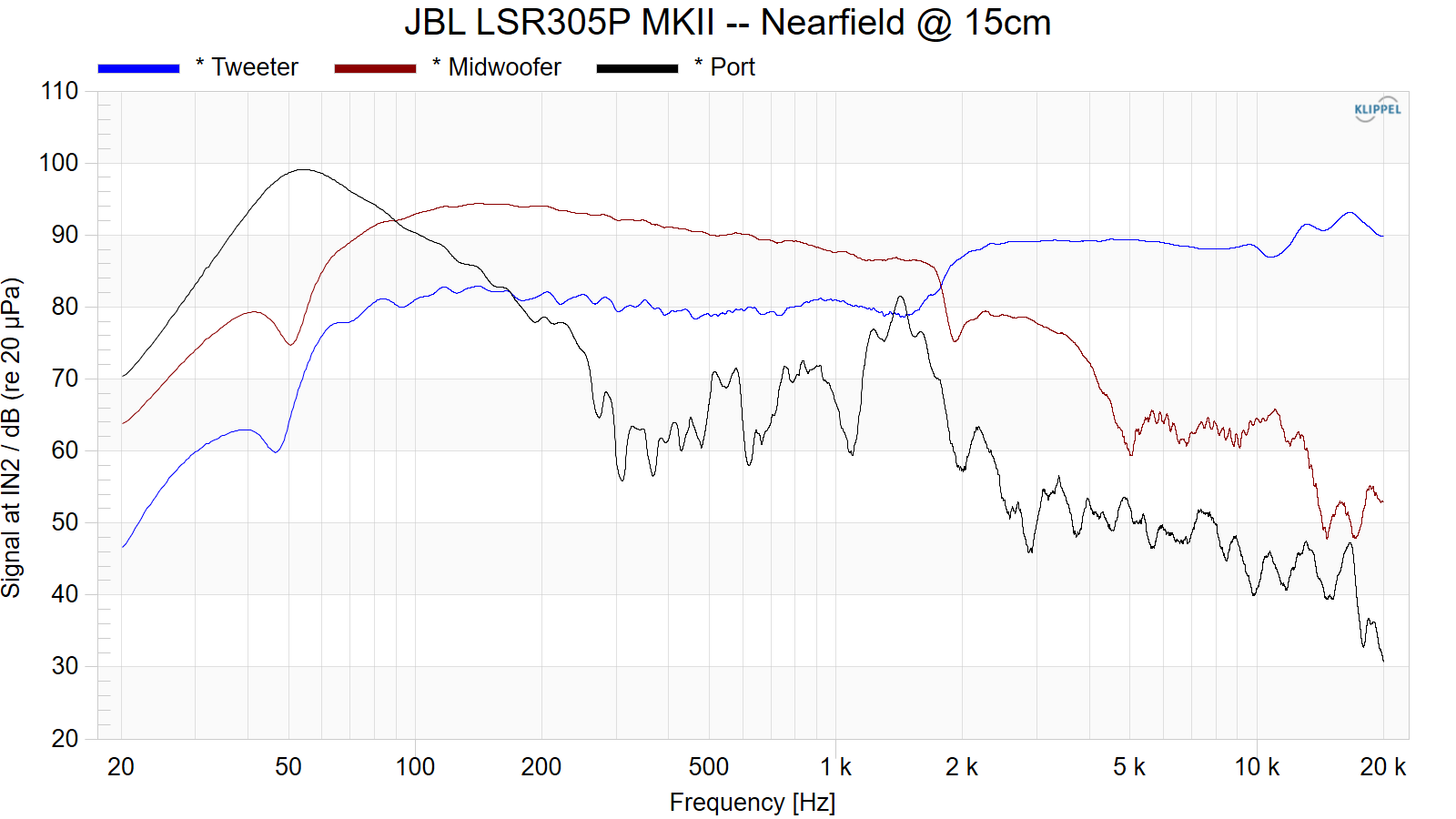
Dynamic Range (Instantaneous Compression Test)
The below graphic indicates just how much SPL is lost (compression) or gained (enhancement; usually due to distortion) when the speaker is played at higher output volumes instantly via a 2.7 second logarithmic sine sweep referenced to 76dB at 1 meter. The signals are played consecutively without any additional stimulus applied. Then normalized against the 76dB result.
The tests are conducted in this fashion:
- 76dB at 1 meter (baseline; black)
- 86dB at 1 meter (red)
- 96dB at 1 meter (blue)
- 102dB at 1 meter (purple)
The purpose of this test is to illustrate how much (if at all) the output changes as a speaker’s components temperature increases (i.e., voice coils, crossover components) instantaneously.
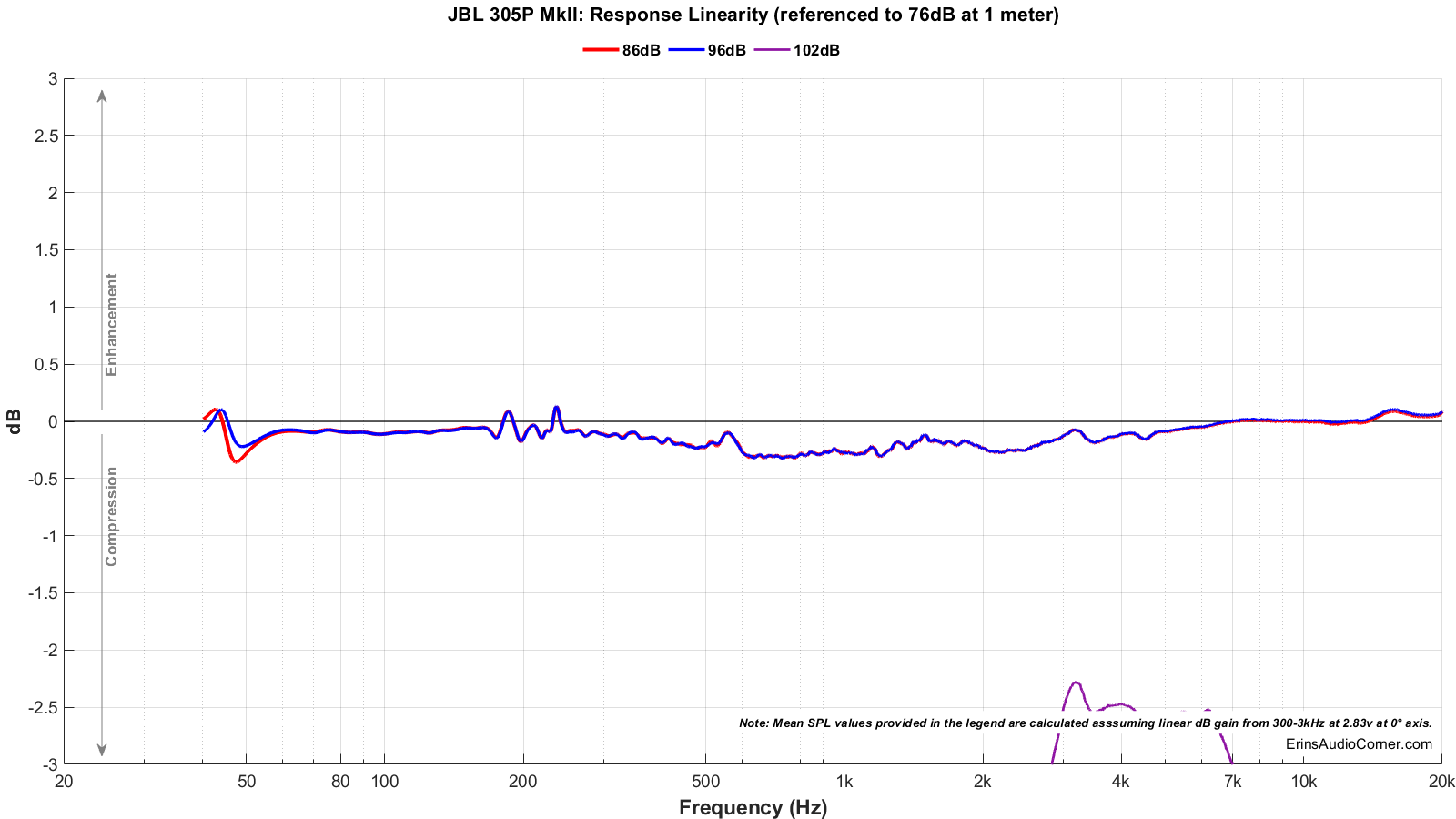
Based on my results above, it is obvious the output is limited significantly somewhere above the 96dB @ 1m output level. I haven’t confirmed with JBL if this is a built-in limiter, though, I assume it is.
Long Term Compression Tests
The below graphics indicate how much SPL is lost or gained in the long-term as a speaker plays at the same output level for 2 minutes, in intervals. Each graphic represents a different SPL: 86dB and 96dB both at 1 meter.
The purpose of this test is to illustrate how much (if at all) the output changes as a speaker’s components temperature increases (i.e., voice coils, crossover components).
The tests are conducted in this fashion:
- “Cold” logarithmic sine sweep (no stimulus applied beforehand)
- Multitone stimulus played at desired SPL/distance for 2 minutes; intended to represent music signal
- Interim logarithmic sine sweep (no stimulus applied beforehand) (Red in graphic)
- Multitone stimulus played at desired SPL/distance for 2 minutes; intended to represent music signal
- Final logarithmic sine sweep (no stimulus applied beforehand) (Blue in graphic)
The red and blue lines represent changes in the output compared to the initial “cold” test.
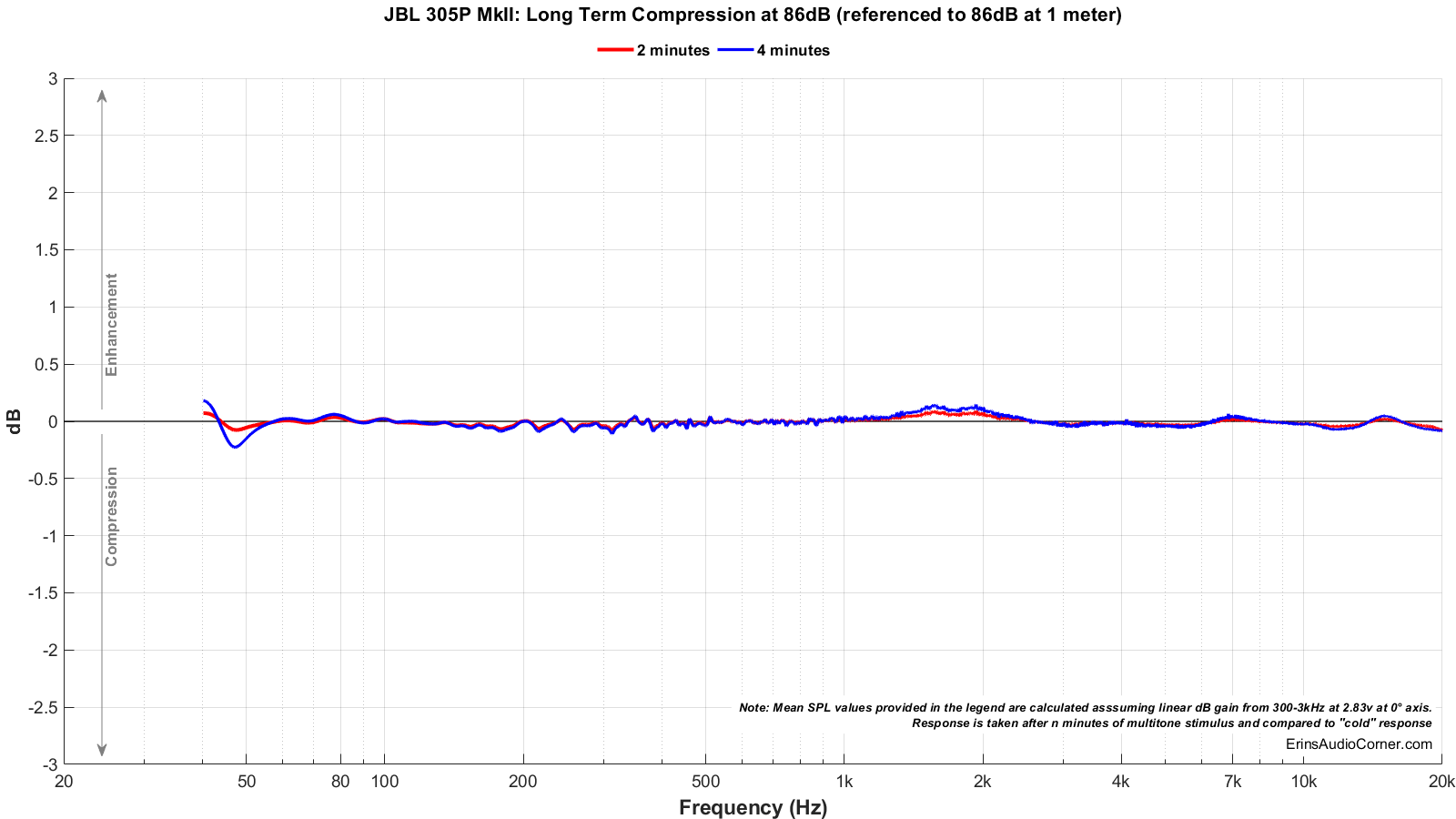
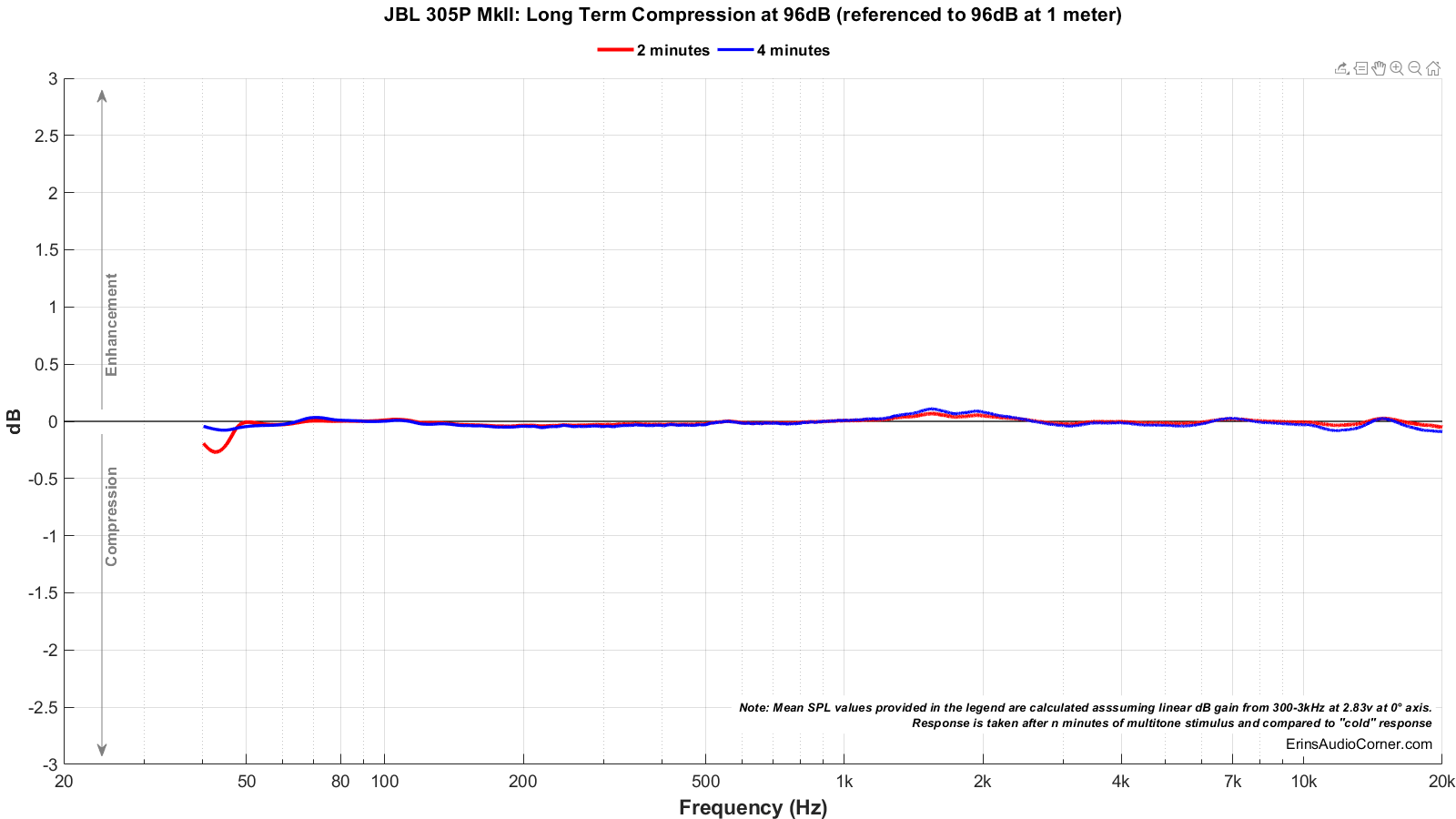
In-Room Measurements from the Listening Position
Below is the actual measured in-room response (with no DSP correction). This is a spatial average taken over approximately 1 cubic foot. The speakers were placed approximately 1.2m from the front wall (not the cabinets; but the actual wall). The listening position was primarily at 1.5m but for this test I measured the response at two different distances from the speakers.
Black = Predicted In-Room Response from SPIN data
Teal = Actual In-Room Measured Response from Main Listening Position at ~ 4 meters

As expected, the predicted in-room response and the farfield response line up quite well above approximately 500Hz.
Parting / Random Thoughts
If you want to see the music I use for evaluating speakers subjectively, see my Spotify playlist.
- Subjective listening varied between the nearfield at 1 meter and the farfield at 4 meters. Subjective listening was conducted at 80-95dB at these distances. Higher volumes were done simply to test the output capability in case one wants to try to sit further away.
- Output is limited by the internal DSP. From my testing, this occurs somewhere between 96dB and 102dB at 1 meter and results in significant limiting of the output signal. If one assumes 3dB of in-room gain and 6dB from adding a second speaker, this works out to be approximately a maximum volume of 105dB at 1 meter and 93dB at 4 meters, in-room for a pair. It is therefore reasonable to assume that these are not ideal for farfield, long-term high output listening and are best relegated to nearfield or midfield use for higher output levels. If listening at moderate volumes, these make a reasonable solution in terms of output levels.
- A bit rumbly in the midbass region
- Depeche Mode - Nice punchy bass but sounds very slightly “rumbly” in the 100-150Hz region.
- 24k Magic - Bass is punchy but not really “full”; assuming a steep roll off below the 50/60Hz region? (Yep, data backs this up)
- Soundstage is surprisingly deep (at least, with experience typically only lending itself to the concentric drivers like Kef in this regard).
- Soundstage width is also quite nice and extends past the sides of the speakers which I believe may come from the wide horizontal radiation pattern of ±70° out to ~13kHz.
- Peter Gabriel - Sledgehammer - Sounds quite “forward”, setting the HF to -2dB helps.
- John Mayer’s “Free Fallin” - When he says, “she’s a good girl”, the word “good” tends to jump out of the mix at you in the 1-2kHz region. I used my RTA app to watch for where this peak occurs (in the nearfield, of course). The RTA shows the peakiness between 1.6kHz to 1.8kHz which is exactly where there is a +3dB jump in the on-axis response (apparently caused from port resonance).
The midbass does some things I do not like at all and generally sounds quite resonant. Let me give some specific examples:
- Howard Jones’ Everlasting Love has a 4-chord progression going in order from:
- 225 Hz, 180, 150 and 60 Hz (approximately)
- In the nearfield (~1 foot to mitigate room), the first note sounds very thin and not at all in line with the other notes. Audacity indicates all 4 notes should be at roughly the same audible level. This note - at ~ 225Hz - is right where a dip in the response indicates a possible resonance (cabinet; driver?).
- Tears For Fears - Everybody Wants to Rule the World at the 1:00 - 1:10 , there is a synth sound around 200Hz that rides along in the background. This sound is brought to the forefront and stands out as a clear resonance in the enclosure. “dum, dummmmm”
- Wrapped Around Your Finger - Glaring sound from what I assume is the synth (@ 0:26 & 0:30, for example) lights up badly. Again, I believe this is enclosure resonance.
This is most troubling when listening to bass guitars that have notes that span the 100-300Hz region where the data also correlates to showing a downward slope in response >200Hz. Really hard for me to ignore these issues as I hear them. If you tend to listen to music with synth or isolated guitar notes then you’ll likely notice this right away; especially in the nearfield as it is less likely to get swamped out by the room effects.
I understand these are really the “darlings” of the budget monitor scene. For the price, you do get a lot of good performance. However, I think it is important to highlight these concerns as they will ultimately affect a person’s final mix. For example, they may try to EQ out the midbass resonances I noted or the 1-2kHz issues or the HF shelf. If these attempts toward correcting the sound were made then the end user - who may have a much better system without these issues - would get bass that doesn’t sound right, or a 1-2kHz region that doesn’t right. I am providing this information so those who are shopping and/or use this speaker are aware of some of the things that were readily apparent to me with a variety of music genres.
While the two EQ options (low and high-frequency shelf) are nice, I do wish there were additional options for fine-tailoring the sound to a particular location a la the Kali IN-5 I recently reviewed. Though, that would also factor into the cost.
As with anything else, I suggest purchasing these from a retailer who offers a return policy so you can try these out in-home. If you’re in search of such a retailer, please consider using my B&H affiliate link below.
As stated in the Foreword, this written review is purposely a cliff’s notes version. For more details about the performance (objectively and subjectively) please watch the YouTube video.
Support the Cause
If you like what you see here and want to help support the cause you might be interested in joining my Patreon, here. You can also contribute via PayPal (the big yellow button below).
Your support helps me pay for new items to test, hardware, miscellaneous items and costs of the site’s server space and bandwidth. All of which I otherwise pay out of pocket. So, if you can help chip in a few bucks, know that it is very much appreciated.
Alternatively, if you are interested in purchasing these speakers, please consider using my B&H affiliate link below. It yields me a small commission at no additional cost to you and allows me to keep doing what I am doing.
You can also join my Facebook and YouTube pages if you would like to follow along with updates.